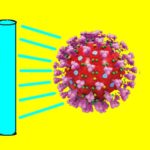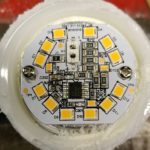The high interest in more economical energy storage these days yields a continual stream of news about advances in battery chemistry. Here are a couple recent developments of particular note:
Capacitors with a high energy density — Capacitors generally have low energy densities relative to batteries or fuel cells. Researchers at the Dept. of Energy’s (DOE) Lawrence Berkeley National Laboratory (Berkeley Lab) aim to improve things through use of a so-called relaxor ferroelectric, basically a ceramic material. Applying an electric field changes in the orientation of the electrons in the material and also drives a change in the energy stored. The problem is in optimizing the material so it can charge to high voltages and discharge rapidly without sustaining damage.

The results are interesting because defects are generally blamed for high leakage currents, aging, and other negative effects. But defects produced by ion bombardment can create intrinsic point defects and defect dipoles which can improve ferroelectric/electrical properties. The defects trap the material’s electrons, preventing their motion and reducing film conductivity by orders of magnitude, thus making them better insulators and making relaxor ferroelectrics withstand bigger voltages and electric fields before they catastrophically fail.
The ion bombardment took place at the Ion-Beam Analysis Facility at Berkeley Lab. There helium ions were used to knock target ions from their sites to create point defects. Measurements showed that the ion-bombarded film had more than twice the energy storage density of previously reported values and 50% higher efficiencies.
Researchers figure the same ion beam approach could also improve other dielectric materials to improve energy storage.
Enclosures that store energy — Researchers at the University of Michigan have figured out a way to get material making up common enclosures and structural elements to do double duty and serve as a battery.


A problem yet to be solved is that the zinc batteries only maintain high capacity for about 100 cycles. As in other battery technologies, the zinc metal eventually forms spikes that pierce the membrane between the electrodes. ON the other hand, the strong aramid nanofiber network between the electrodes may hold the key to a relatively long cycle life, researchers say. And the inexpensive and recyclable materials make the batteries easy to replace.







Leave a Reply